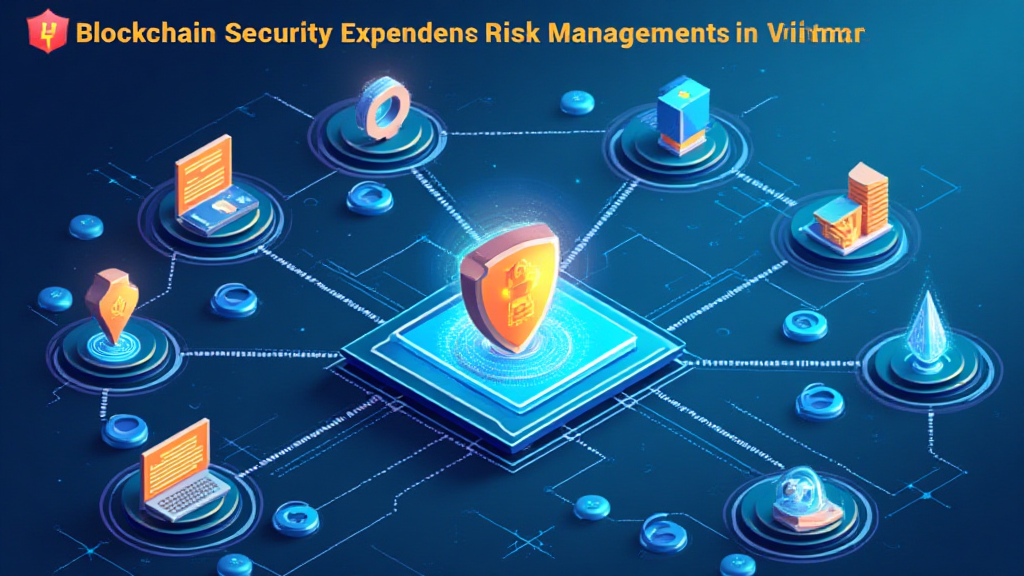2025 Blockchain Risk Management Standards: A Comprehensive Guide for Vietnam
With roughly $4.1 billion lost to DeFi hacks in 2024 alone, the importance of robust risk management practices cannot be understated. The rising popularity of cryptocurrencies in Vietnam, fueled by a remarkable user growth rate of 400% in the last two years, highlights the urgent need for effective risk management frameworks like HIBT (Hazard Identification and Business Threats). This guide aims to provide insightful strategies for navigating the complex world of blockchain risk management, tailored specifically for the growing Vietnamese market.
Understanding HIBT Risk Management
The HIBT framework is designed to assist businesses in identifying potential risks and implementing measures to mitigate those threats. Think of it as a bank vault for digital assets: secure, reliable, and essential for protecting against the unknown. In a market as volatile as cryptocurrency, being proactive about risk management is not just beneficial—it’s necessary.
- Hazard Identification: Recognizing potential risks in the blockchain space, such as smart contract vulnerabilities and cyberattacks.
- Business Threats: Evaluating external threats like regulatory changes, market fluctuations, and technological advancements.
Key Components of HIBT
To effectively employ HIBT within Vietnam’s blockchain context, organizations should focus on three main components:

- Risk Assessment: This involves evaluating the likelihood of specific risks and their potential impact on your business.
- Risk Mitigation Strategies: Implementing precautionary measures to safeguard against identified risks.
- Continuous Monitoring: Keeping an eye on emerging threats and adjusting strategies accordingly.
Challenges Facing the Vietnamese Crypto Market
While Vietnam is rapidly embracing cryptocurrency, several challenges impede its growth. According to recent data, the Vietnamese crypto market is currently worth approximately $1 billion, with projections suggesting remarkable growth. This rapid development comes with unique challenges:
1. Regulatory Hurdles: The vagueness surrounding regulatory guidelines creates uncertainty.
2. Security Risks: Vietnam has experienced a surge in phishing attacks and fraudulent schemes targeting crypto users.
3. Lack of Awareness: Many investors are not well-versed in secure crypto practices, leading to heightened vulnerability.
Best Practices for Blockchain Risk Management
To achieve optimal risk management, organizations should adopt a multi-faceted approach. Here are some best practices tailored for the Vietnamese market:
- Conduct Regular Security Audits: Evaluate smart contracts and other critical components for vulnerabilities. “How to audit smart contracts” should be a priority for any serious player.
- Educate Stakeholders: Create awareness campaigns to educate users about common risks and safe practices.
- Diversify Investments: Avoid putting all funds into a single cryptocurrency.
- Utilize Technology: Leverage tools like hardware wallets and cold storage to enhance security.
Real-World Examples of Effective Risk Management
Learning from real-world scenarios can provide invaluable insights. Notable cases include:
- Ledger Nano X: Reports indicate that using Ledger wallets reduces hacks by up to 70%.
- DeFi Platforms: Many successful DeFi platforms employ regular audits and bug bounty programs, significantly decreasing incidents of hacks.
The Future of HIBT in Vietnam
As the Vietnamese crypto industry continues to expand, the HIBT framework will become increasingly vital. The integration of advanced technologies, robust governance structures, and collaborative efforts among stakeholders will play a central role in fostering a secure environment for users. Aligning practices with tiêu chuẩn an ninh blockchain (blockchain security standards) will enhance credibility and trust within the market.
Conclusion
As we’ve discovered, effective risk management is paramount for navigating the dynamic landscape of Vietnam’s cryptocurrency market. The adoption of the HIBT framework is essential for businesses looking to safeguard their assets and maintain user trust. With regulations evolving and the digital finance scene booming, the future holds immense potential—but only for those who are prepared. By implementing these strategies, investors, businesses, and users can enhance their security posture and contribute to a more resilient crypto ecosystem. For a deeper dive into cryptocurrency topics, be sure to explore HIBT.com.
Remember, risk management isn’t just a checklist; it’s an ongoing process.
Author: Dr. Le Minh, a blockchain security expert with over 15 published papers in the field and a leader in auditing several high-profile DeFi projects.



